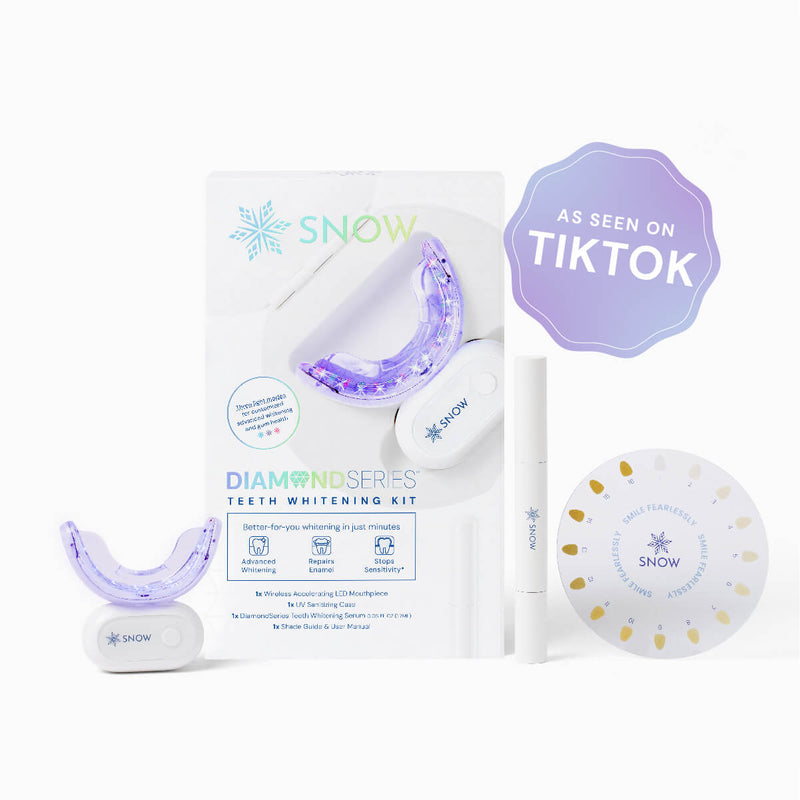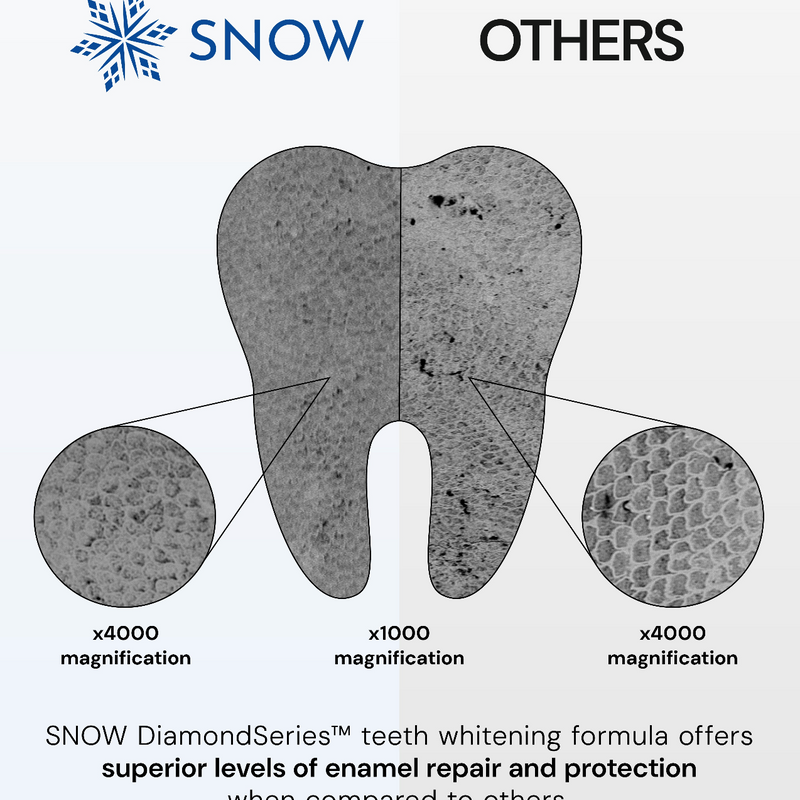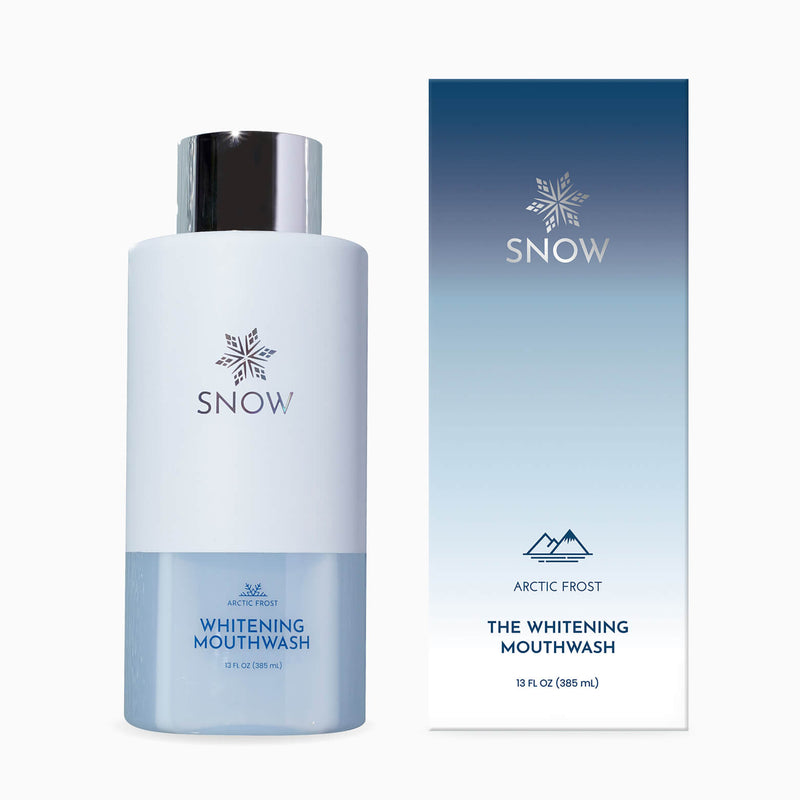Does toothpaste kill bacteria? Absolutely! But not all toothpastes are made equal.
In this article, we will discuss how toothpaste kills bacteria, key considerations when purchasing bacteria-killing toothpaste, and other methods for removing bacteria from your mouth.
These sections will provide you with a comprehensive understanding of oral hygiene practices and product choices.
Does whitening toothpaste work to remove germs? Let's find out.
What this article covers:- Does Toothpaste Kill Germs?
- How Toothpaste Kills Bacteria
- Things to Consider When Purchasing Bacteria-Killing Toothpaste
- Toothpaste That Kills Bacteria
- Other Methods for Removing Bacteria From Your Mouth
Does Toothpaste Kill Germs?
Yes, toothpaste does kill germs.
Toothpaste formulations typically contain antibacterial agents like triclosan and fluoride, which help eliminate harmful bacteria in the mouth. What does fluoride do in toothpaste? It helps prevent tooth decay by strengthening the enamel and fighting bacteria.
These ingredients reduce plaque and prevent gingivitis, contributing to oral health.
Ingredients found in some whitening toothpastes, such as hydrogen peroxide, kill bacteria by breaking down their cell walls.
How Toothpaste Kills Bacteria
Toothpaste contains active ingredients that target and eliminate harmful bacteria in the mouth. Here are a few worth noting.
Antibacterial Agents
As mentioned in the previous section, antibacterial agents in toothpaste, such as triclosan and hydrogen peroxide, maintain oral health. Triclosan reduces oral bacteria, decreasing plaque and gingivitis.
Hydrogen peroxide releases oxygen molecules that break down bacterial cell walls, providing cleaning and whitening benefits.
These ingredients neutralize harmful microbes, maintaining a healthy balance of bacteria in the mouth, promoting cleaner and whiter teeth.
Abrasives
Abrasives in toothpaste are essential for removing plaque and surface stains. They work to keep teeth clean and polished.
Common abrasives like calcium carbonate, silica, and aluminum oxides scrub the tooth surface, effectively removing buildup and enhancing enamel smoothness and shine.

The Relative Dentin Abrasivity (RDA) value measures the abrasiveness of toothpaste, ensuring it is safe for daily use. Choosing toothpaste with a balanced RDA level and practicing good brushing techniques helps maintain dental health.
Things to Consider When Purchasing Bacteria-Killing Toothpaste
Choosing the right toothpaste involves evaluating several factors to ensure it effectively kills bacteria and supports oral health.
Active Ingredients
When choosing bacteria-killing toothpaste, consider the active ingredients that contribute to its effectiveness. Key ingredients include nano-hydroxyapatite, which helps repair and remineralize tooth enamel.
Coconut oil and peppermint oil are beneficial for their antibacterial properties and its ability to promote fresh breath. Finally, xylitol fights bacteria and reduces the risk of tooth decay, making it a welcome addition to our toothpaste.
Brand Reputation
Brand reputation is another crucial factor when selecting toothpaste. Established brands often have a track record of research and development, ensuring their products meet high standards of safety and effectiveness.
It's also beneficial to look at reviews and testimonials from other users. Positive feedback can indicate the reliability and effectiveness of the toothpaste.
Flavour
Our research indicates that the flavor of toothpaste can significantly impact your brushing routine.
Toothpaste flavors can range from classic mint to unique combinations like coconut and lavender, enhancing the overall brushing experience without contributing to tooth decay.
Environmental Impact
Considering the environmental impact of toothpaste is increasingly important. Opt for products with eco-friendly packaging and natural, biodegradable ingredients.
Brands that prioritize sustainability, such as using recyclable tubes or offering zero-waste packaging, contribute to reducing plastic waste.
Choosing products with ethically sourced ingredients also aligns with a more environmentally conscious lifestyle.
Toothpaste That Kills Bacteria
SNOW Nano-Hydroxyapatite Whitening Toothpaste
SNOW's Nano-Hydroxyapatite teeth whitening toothpaste offers advanced oral care benefits by combining traditional toothpaste properties with innovative whitening technology.
With nano-hydroxyapatite (n-HAp), it helps repair microscopic enamel damage, reduce sensitivity, and prevent cavities by forming a protective layer over the teeth.
Our findings show that it effectively fills in enamel defects and strengthens the tooth surface, ensuring a healthier smile.
Regular use of SNOW Nano-Hydroxyapatite Whitening Toothpaste can lead to noticeably whiter teeth without the harsh abrasives that can cause enamel erosion.
The inclusion of natural ingredients like coconut oil and peppermint oil further enhances its antibacterial effects, promoting oral health and providing a refreshing brushing experience.
This toothpaste is suitable for daily use, making it a comprehensive solution for those seeking both whitening and restorative benefits.
Other Methods for Removing Bacteria From Your Mouth
In addition to toothpaste, there are other effective methods for reducing bacteria in your mouth.
Mouthwash
Based on our observations, using mouthwash can be an effective method for reducing bacteria in your mouth, alongside regular brushing and flossing.
The SNOW Arctic Frost teeth whitening mouthwash combines hydrogen peroxide with peppermint oil to freshen breath and whiten teeth.
It reaches areas that might be difficult to clean with a toothbrush or floss alone, ensuring a more thorough reduction of harmful bacteria.
However, it should not replace brushing and flossing, but act as an additional step in maintaining oral hygiene.
Electric Toothbrush
Electric toothbrushes are highly effective in removing plaque and bacteria from teeth and gums.
The SNOW Advanced Whitening Electric Toothbrush features high-frequency vibrations that ensure thorough cleaning of all tooth surfaces.
These toothbrushes often come with multiple settings, allowing users to customize their brushing experience for optimal plaque removal and gum health.
Electric toothbrushes may be more effective than manual ones in reducing plaque and gingivitis. The oscillating or vibrating bristles help dislodge food particles and plaque, reducing the risk of cavities and gum disease.

Floss
Flossing is essential for removing food particles and plaque from between teeth where a toothbrush cannot reach.
The SNOW Charcoal Teeth Whitening Floss combines the benefits of traditional floss with activated charcoal, which helps absorb and remove plaque and bacteria.
Regular flossing reduces the risk of gum disease and cavities by preventing the buildup of harmful bacteria in these hard-to-clean areas.
Using floss daily ensures that your teeth and gums remain healthy by disrupting and removing plaque before it hardens into tartar.
Conclusion
Now you know all about the relationship between toothpaste and germs!
We have discussed how toothpaste kills bacteria with active ingredients, key factors to consider when purchasing bacteria-killing toothpaste, and additional methods such as mouthwash, electric toothbrushes, and flossing to enhance oral hygiene.
Choose SNOW for effective and comprehensive oral care solutions, and start your journey to a healthier smile today.
If you want to learn more, why not check out these articles below:
- How Long Does It Take for Whitening Toothpaste to Work
- Does Purple Toothpaste Work
- How Long Does a Tube of Toothpaste Last
- How Does Sensitive Toothpaste Work
- Why Are Toothbrushes Important?
- What Is the Most Popular Toothbrush Color?
- Electric Toothbrush Feature
- How to Organize Toothbrushes
- How to Choose a Toothbrush
- Best Whitening Toothpaste
- Best Toothpaste for Sensitive Teeth
- Best Purple Toothpaste
- Best Hydroxyapatite Toothpaste
- Best Toothpaste Tablets
- Best Toothpaste to Prevent Cavities

























